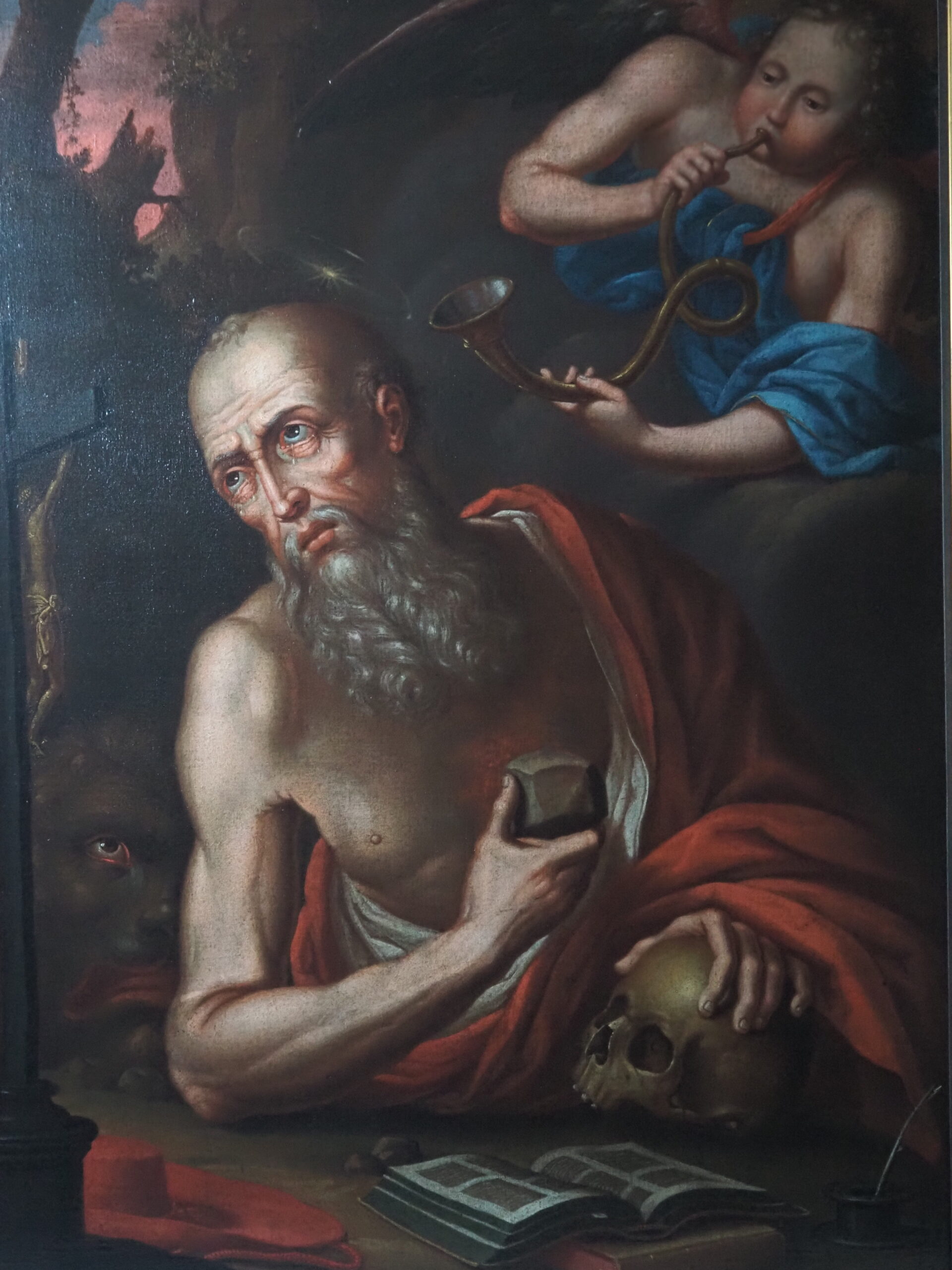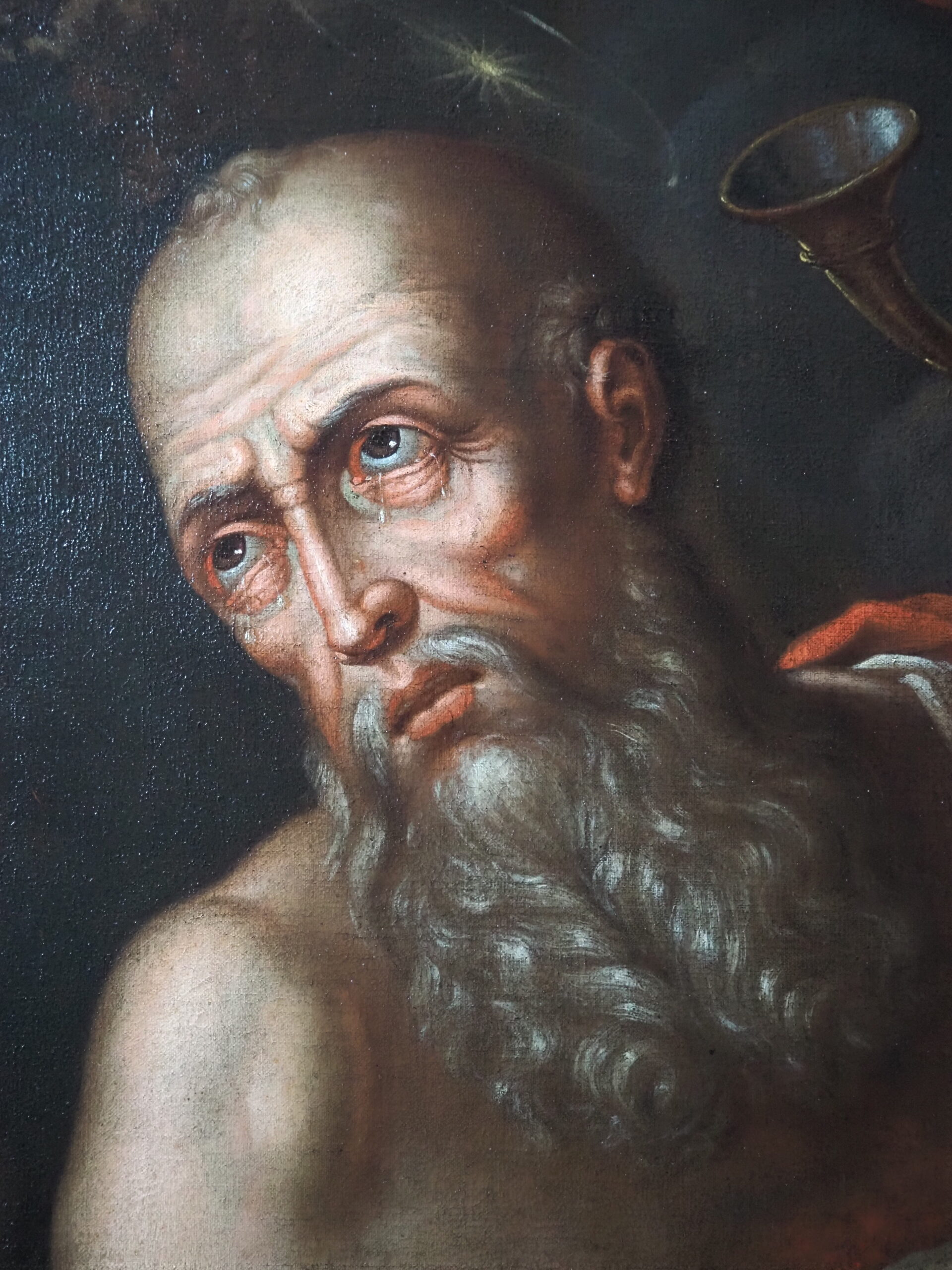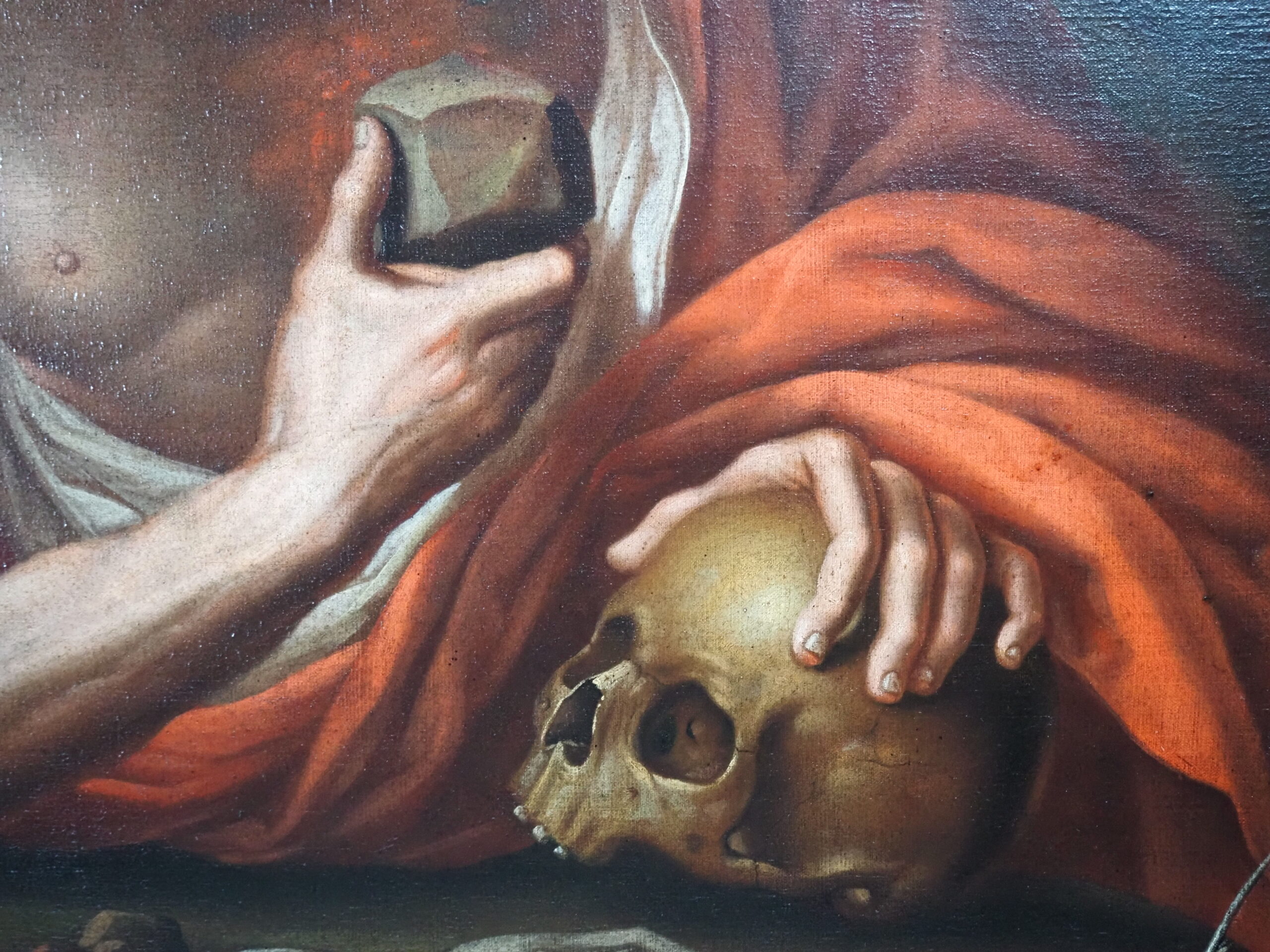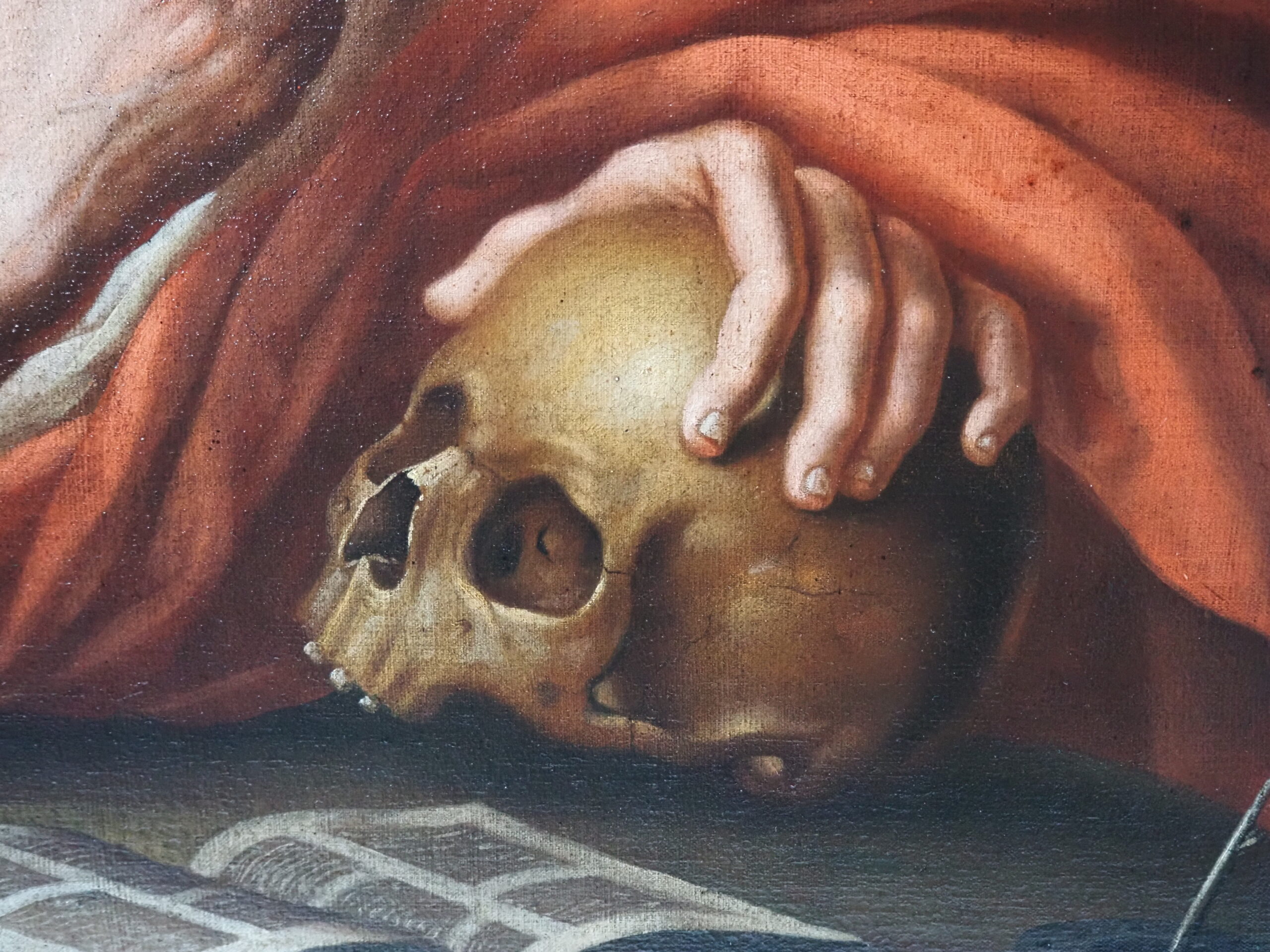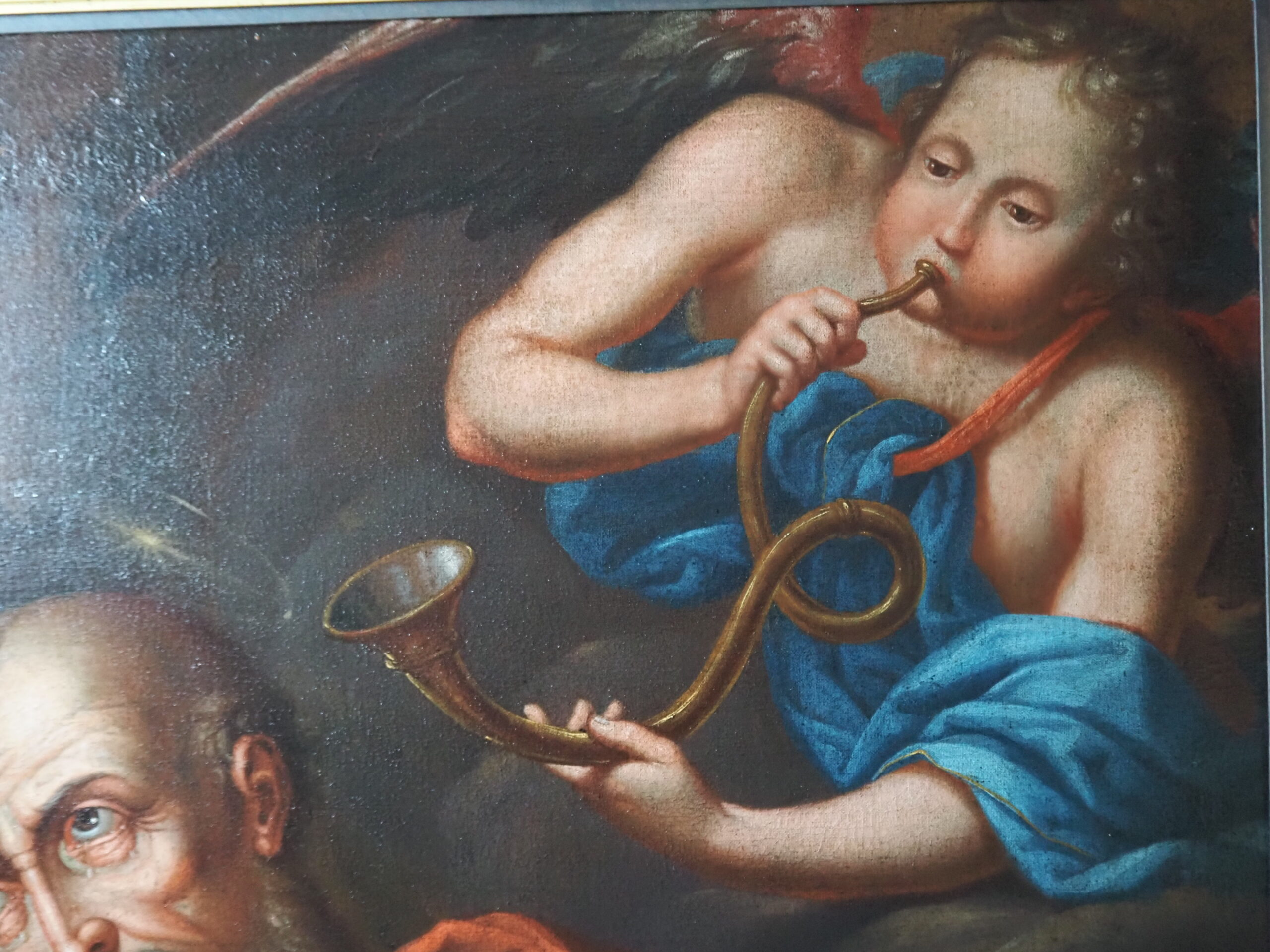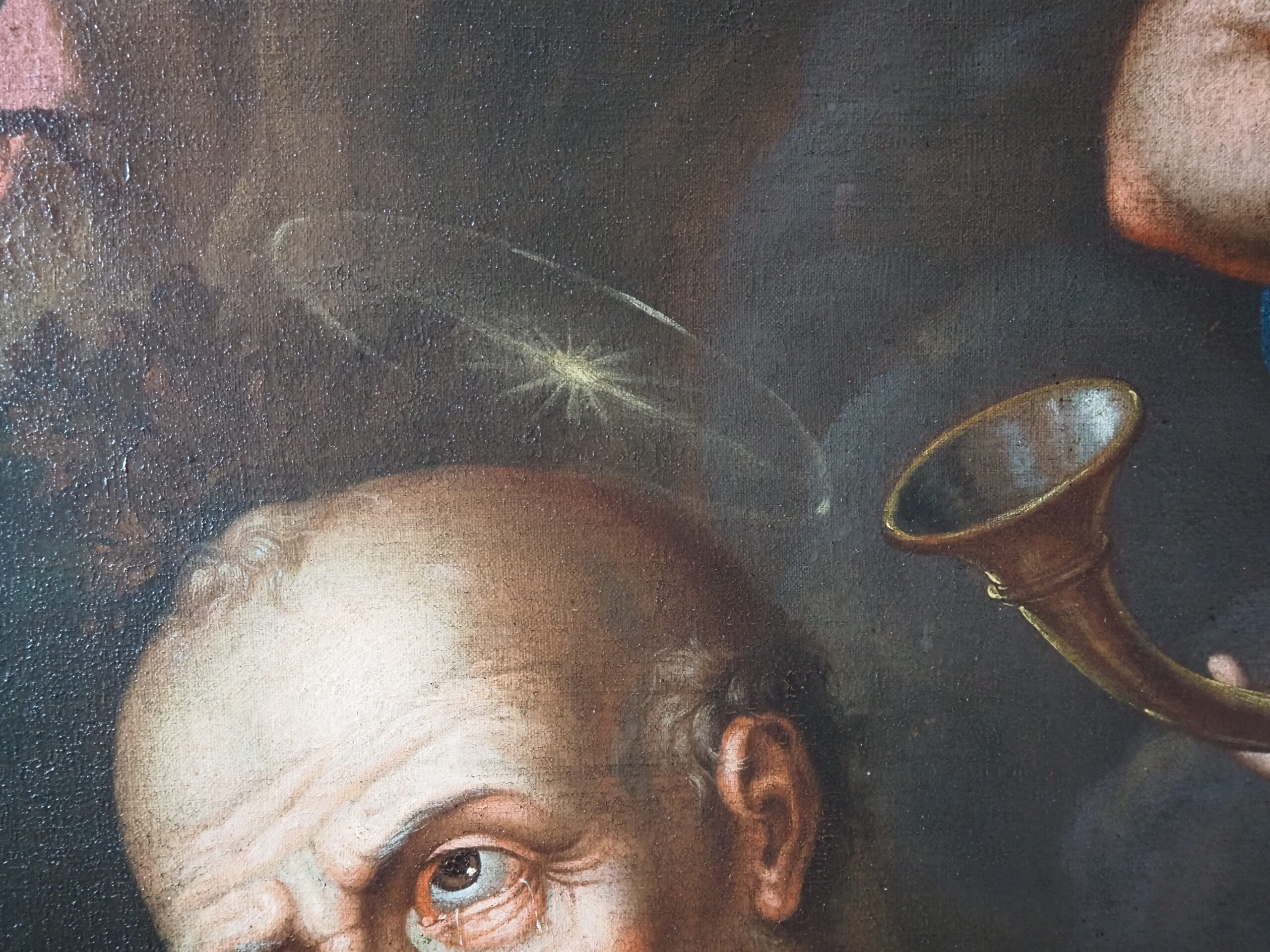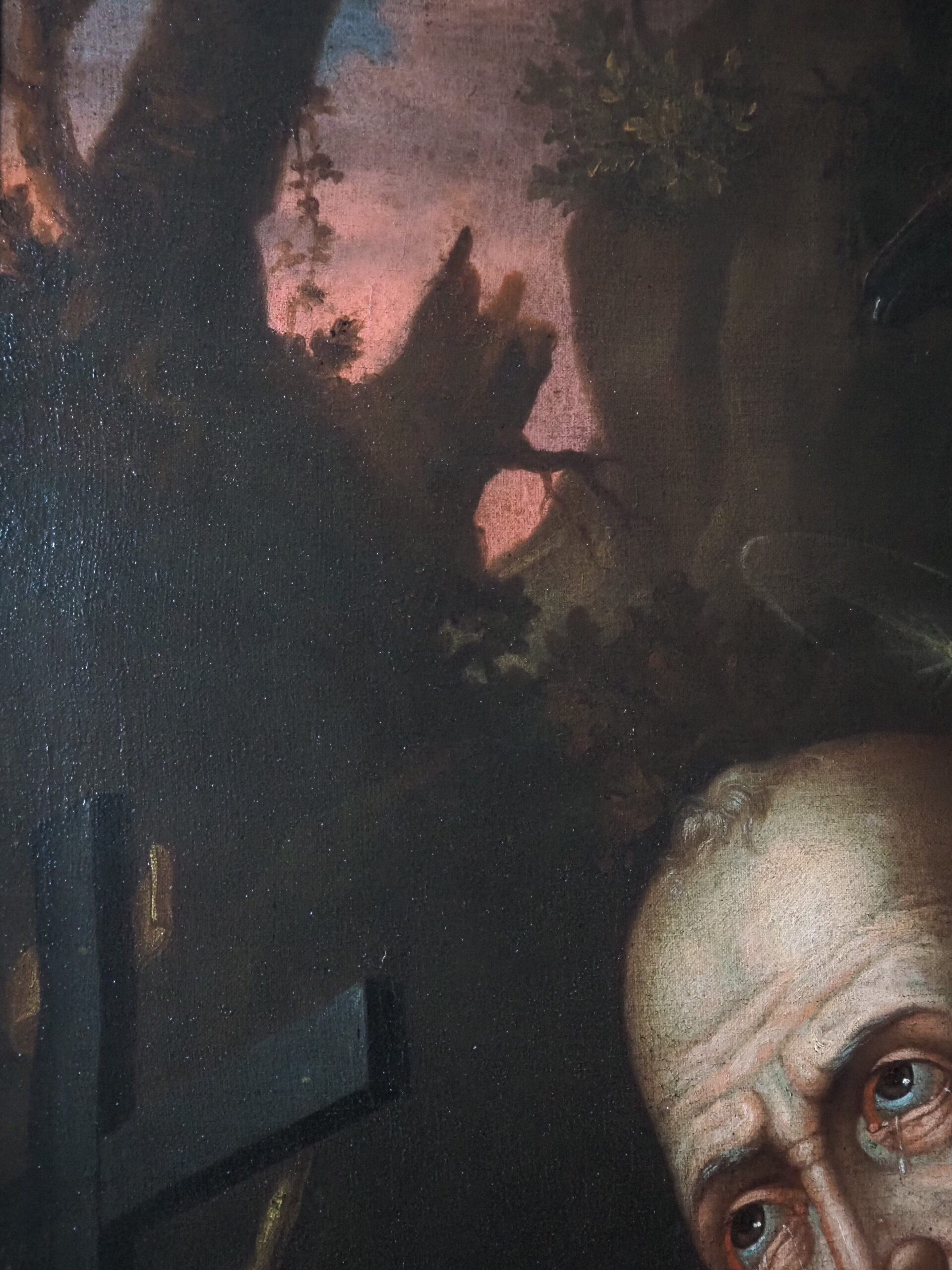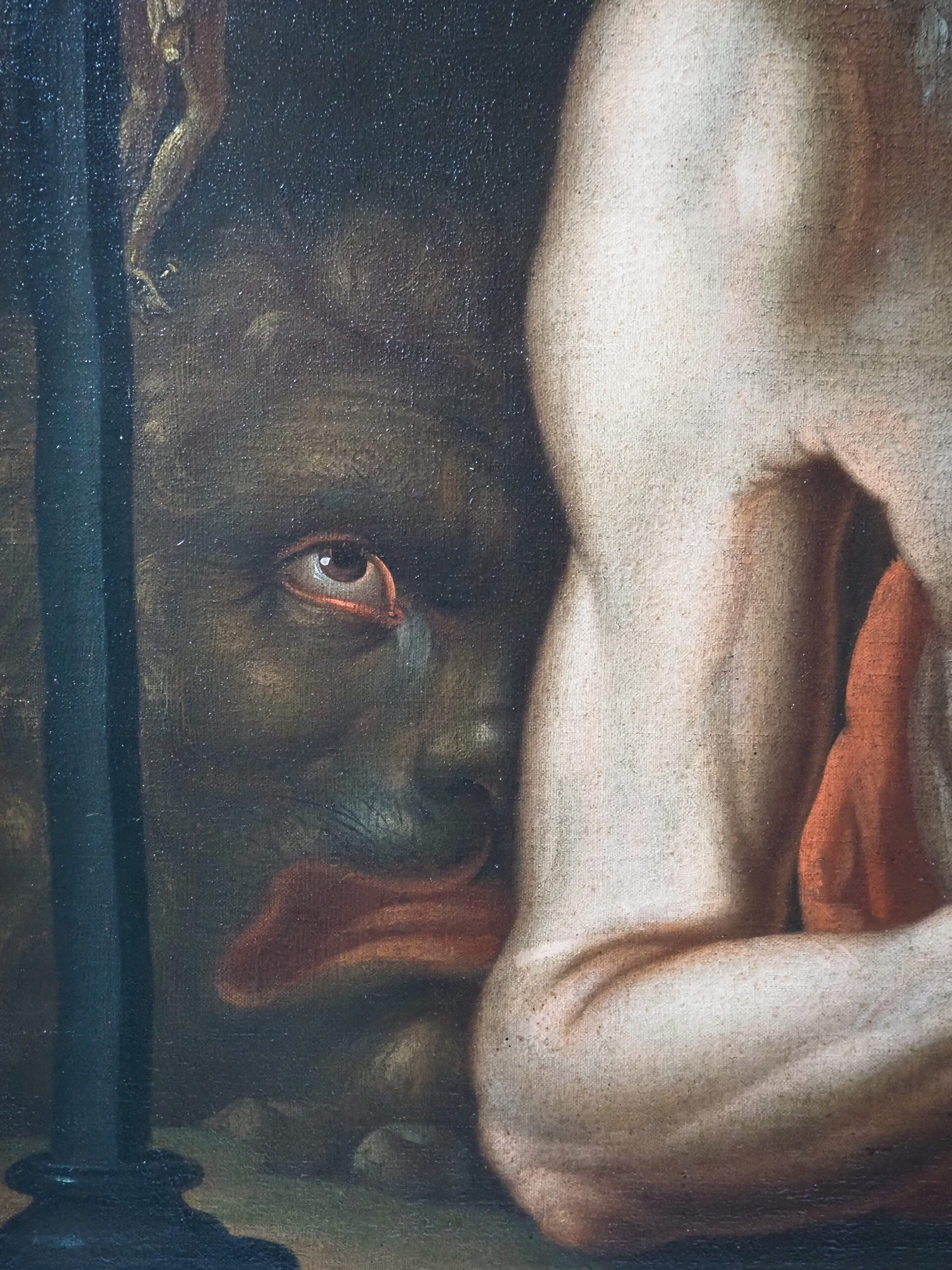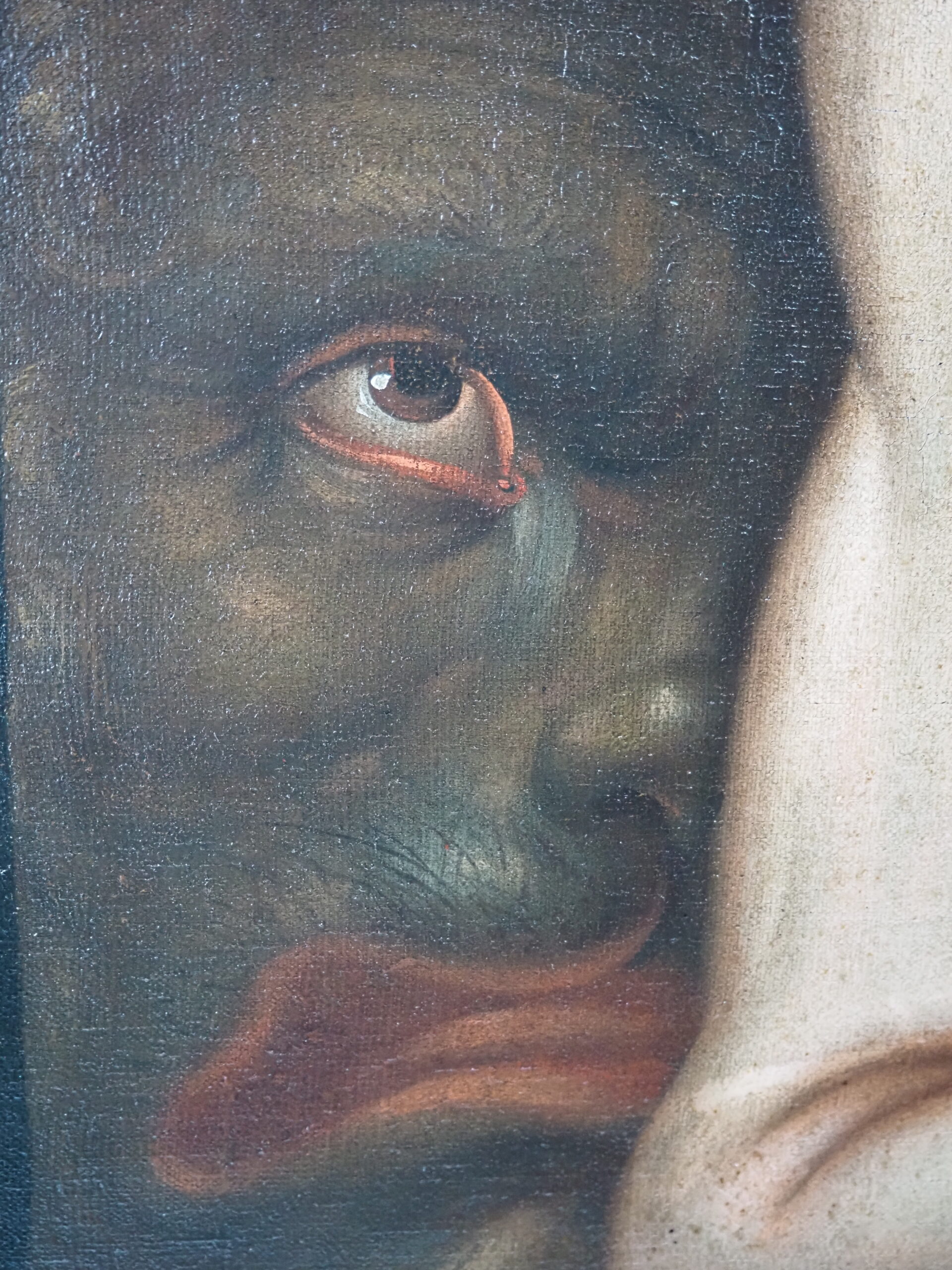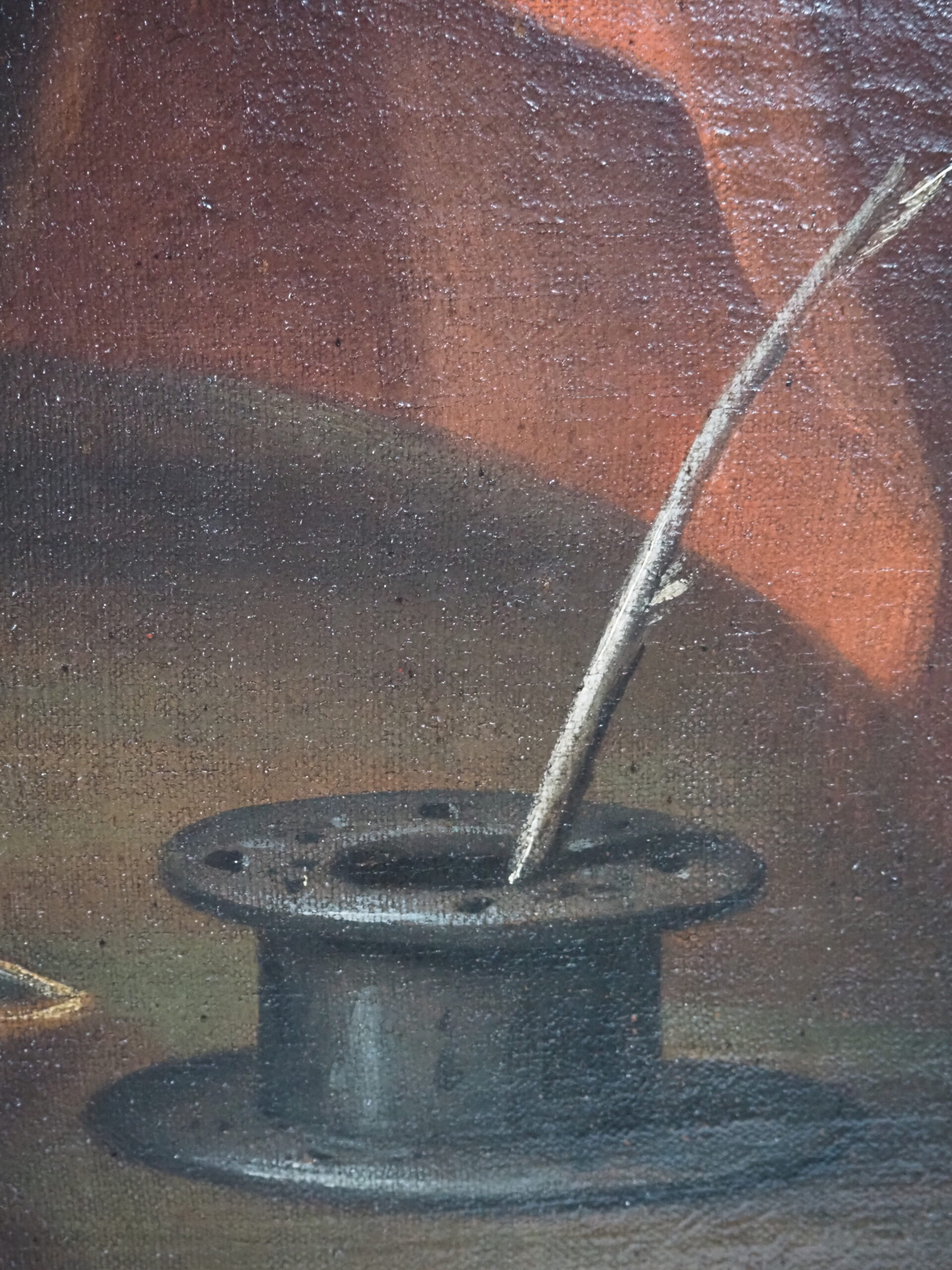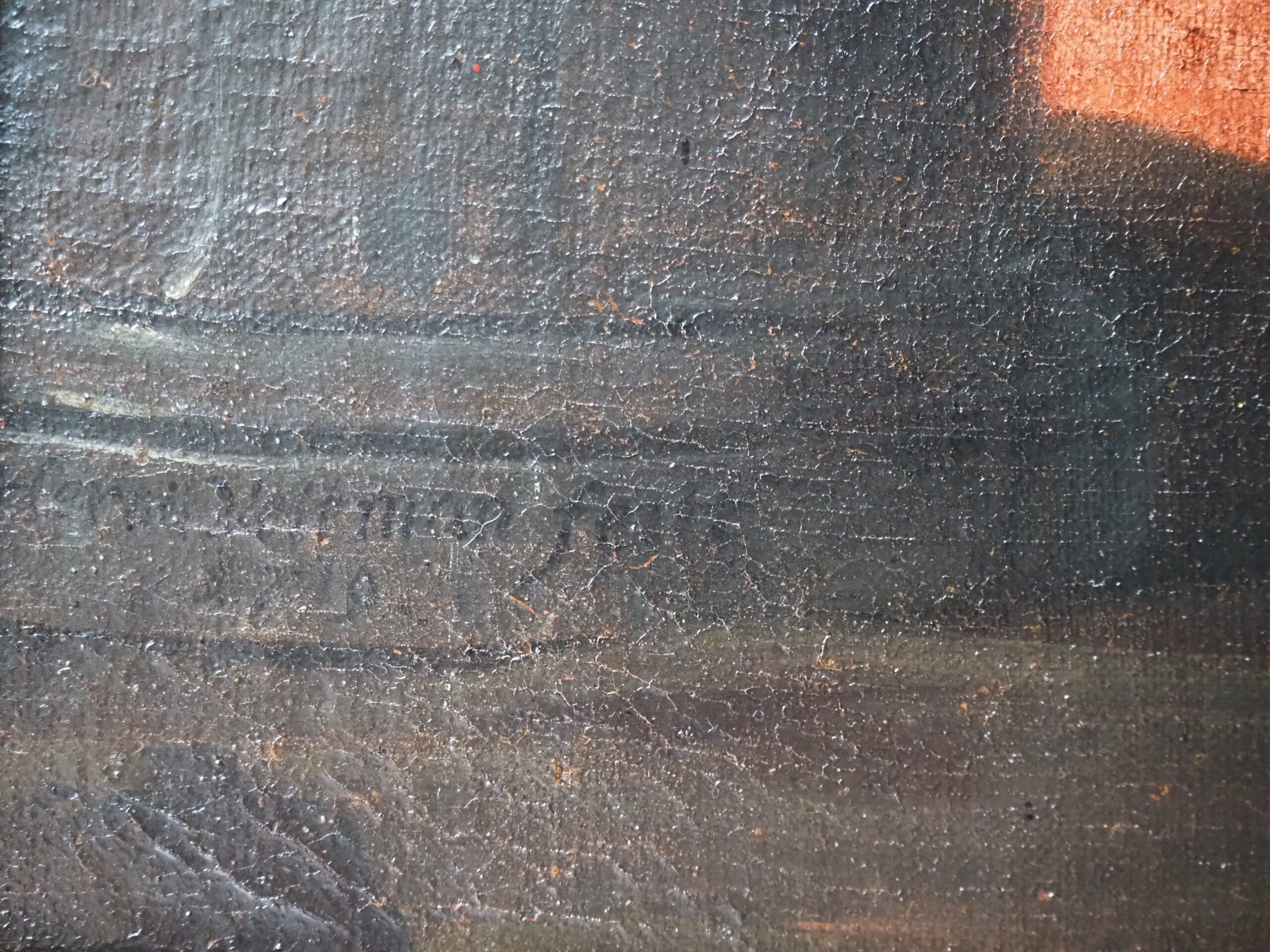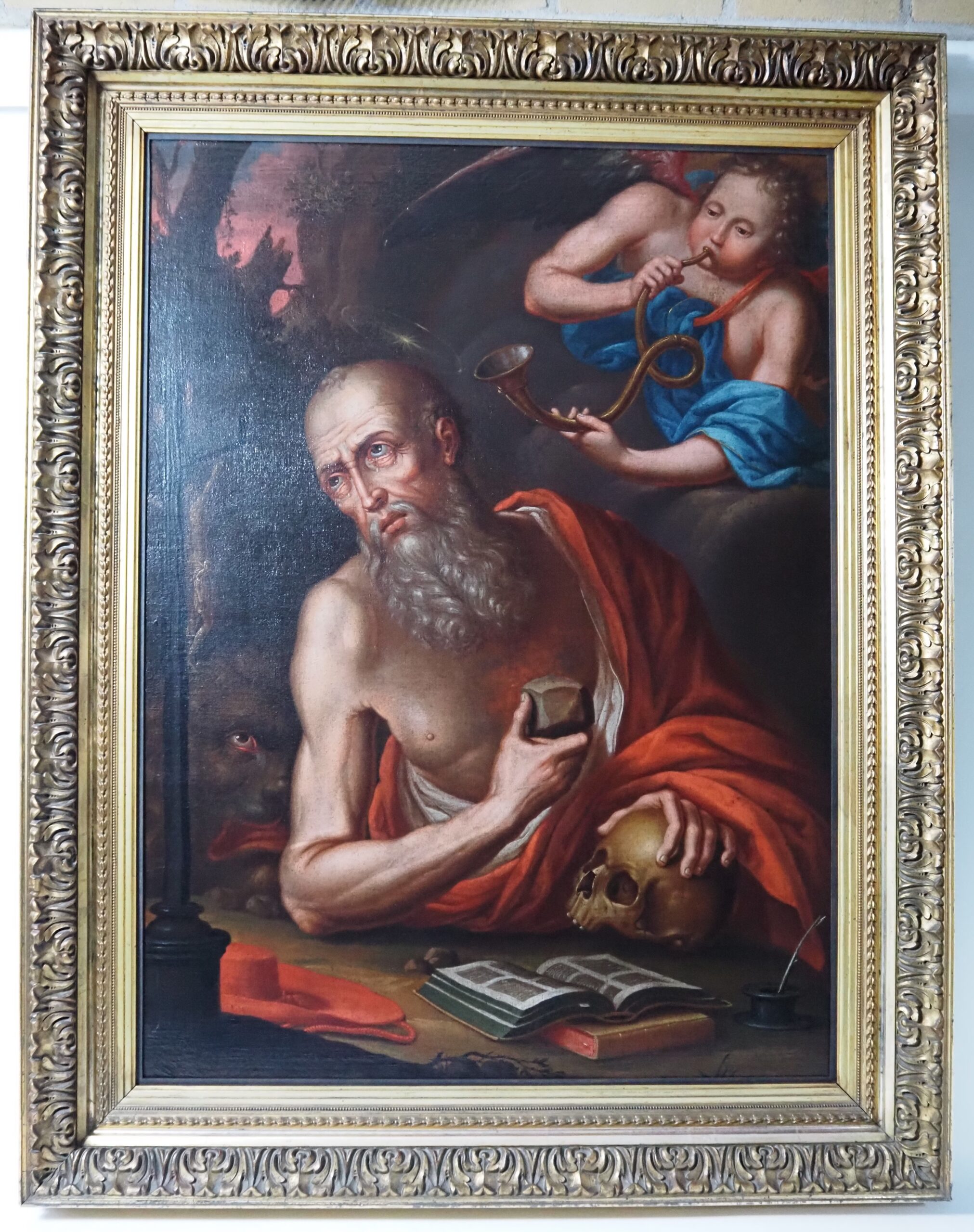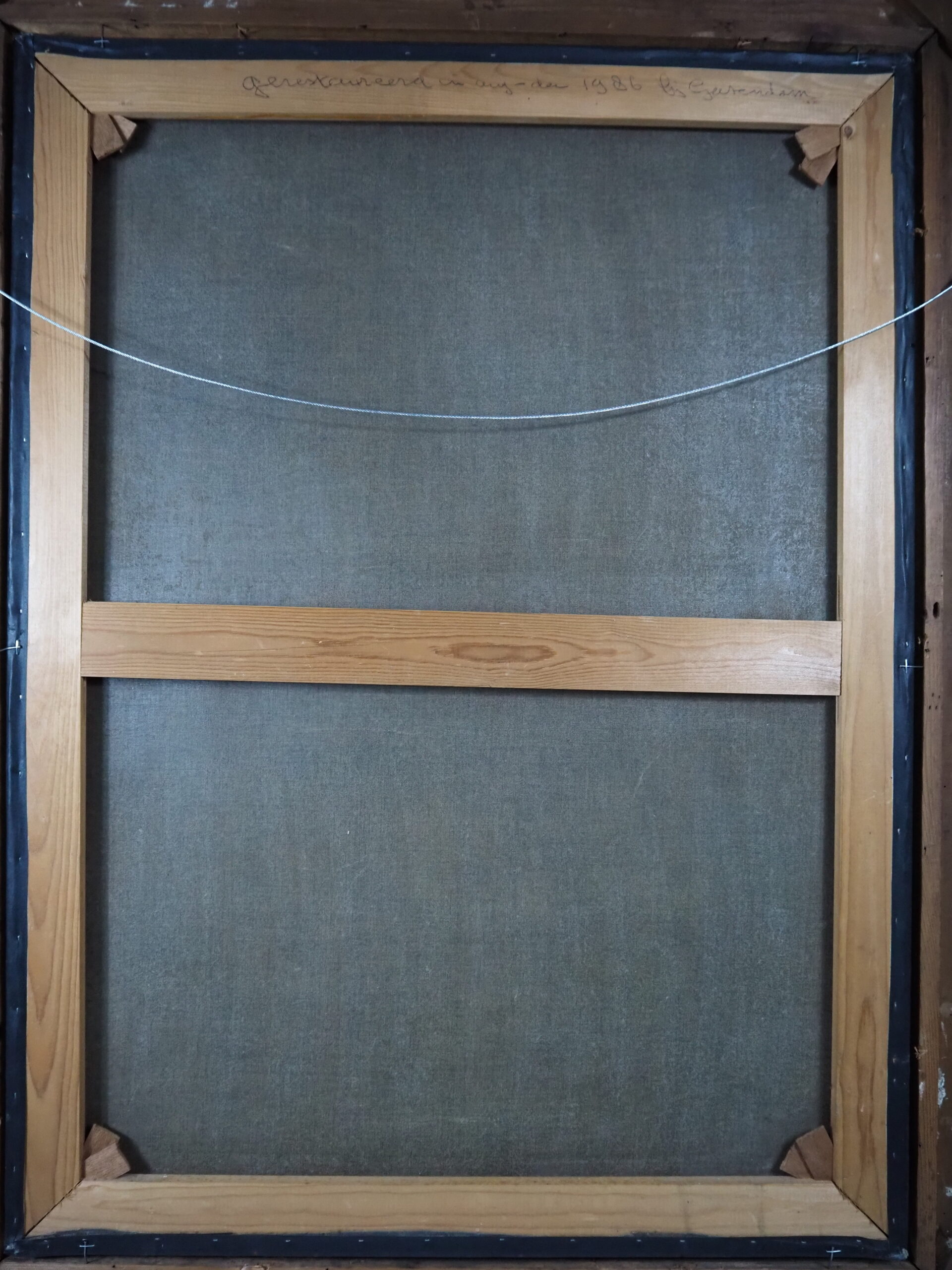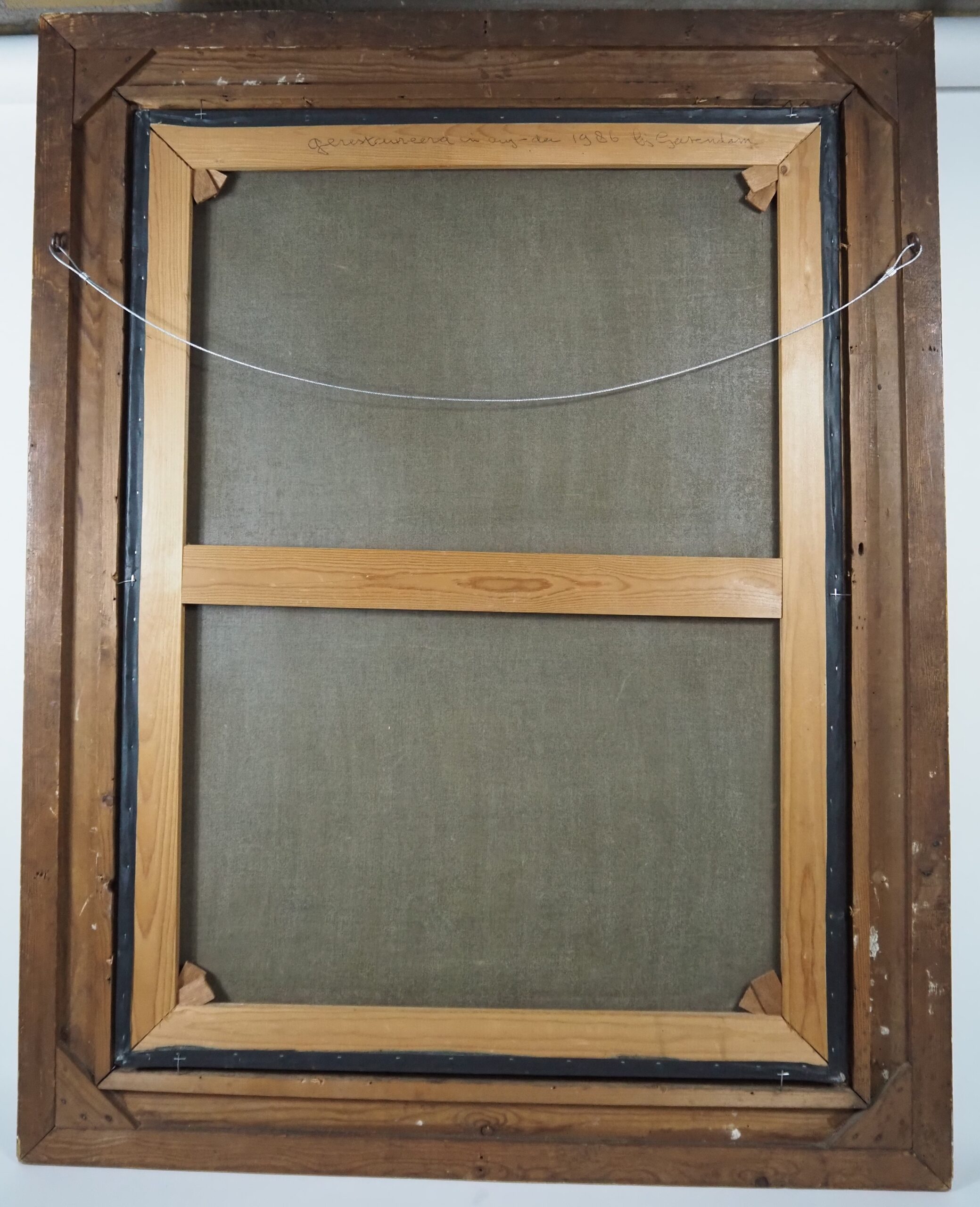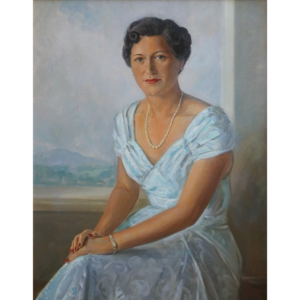Description
Unknown artist of the XVII-XVIII century
‘Saint Jerome Hears the Trumpet of the Last Judgment’
Signed and dated lower left (on the base of the crucifix) Herm. Veltman fecit 1719
Oil on canvas
Dimensions excl. frame: 102.5 x 76.5 cm.
incl. frame: 126 x 99 cm.
In good condition, professionally cleaned, relined.
Price on request
Depicted is Saint Jerome in a cave with a crucifix, a lion, a book, a red cardinal’s hat, holding a skull. He is startled by the sound of an angels trumpet calling the Last Judgment. He pounds his chest with a rock. Saint Jerome’s self-flagellation with a rock was a practice of asceticism and mortification aimed at taming his internal desires and resisting temptation. This act of self-inflicted pain was intended to purify his body of impure urges that contradicted his religious doctrine.
Saint Jerome is often depicted with a lion in art due to a popular legend. The story, recounted in the Golden Legend, tells of Jerome living near a monastery when a lion came limping into their midst. The other monks fled, but Jerome calmly approached the lion and discovered it had a thorn in its paw. Jerome removed the thorn, and the grateful lion became his devoted companion.
Paintings of Saint Jerome were a popular subject in the 17th century. Jusepe de Ribera, also called Lo Spagnoletto, created two etchings depicting Saint Jerome in the wilderness being interrupted by the sound of a trumpet. One of Ribera’s earliest depictions of Saint Jerome dates from 1616–17 and was painted for one of his patrons in Naples, Pedro Téllez Girón, Duke of Osuna. In that work, Saint Jerome is depicted in meditation holding a skull and lying on the ground in his cave listening to the trumpet of the Last Judgement played by an angel. Another canvas of 1626 in The Hermitage, St. Petersburg, depicts the same subject but with a different composition. In that work, the saint, surrounded by his symbols including the lion, is interrupted in his labors by an angel with a musical instrument.

